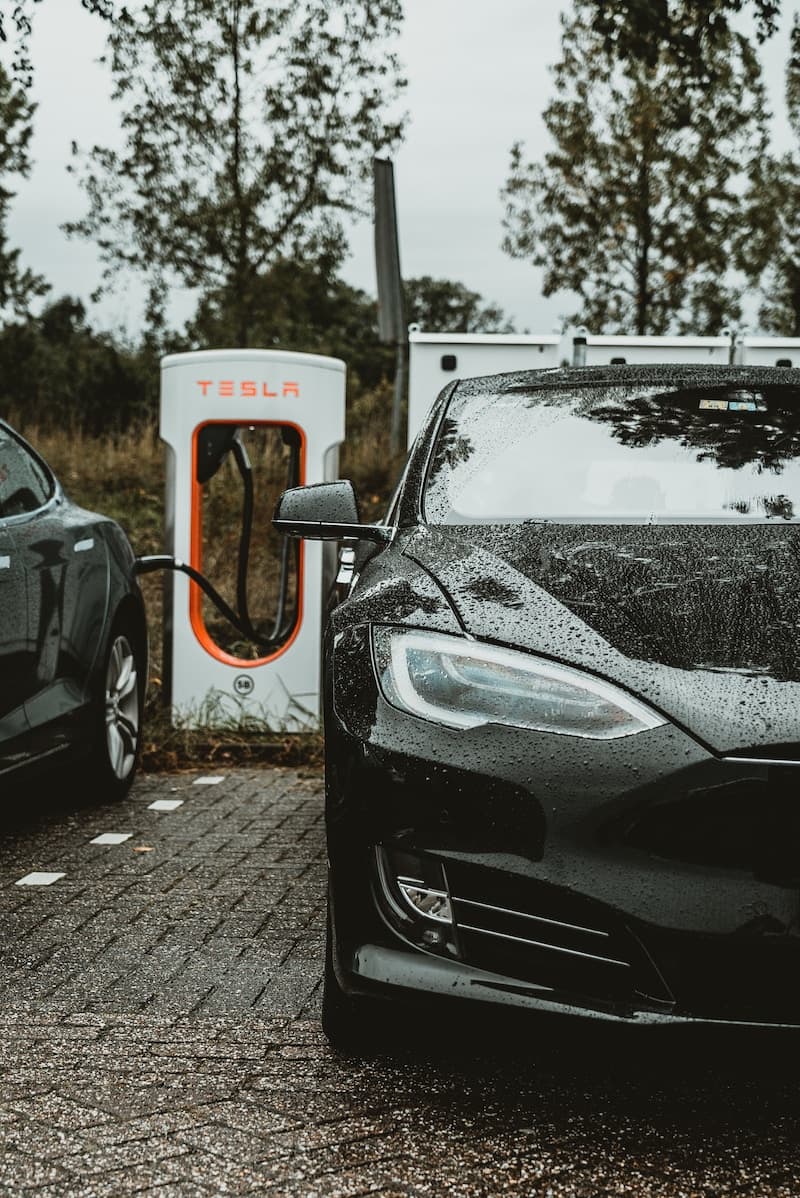Electric Vehicles (EVs) are driving the next era of mobility. But how prepared are countries for this shift? The EV Readiness Index grants a detailed look into which nations are outpacing others and which are coming up from behind in this green race.
Introducing the EV Readiness Index
In today’s rapidly evolving landscape of global mobility, electric vehicles (EVs) stand out as a beacon for sustainable transportation. As nations confront environmental challenges and the imperative of reducing carbon footprints, the question isn’t just about which countries are making the switch to electric, but which are best prepared for it.
At the forefront of understanding electric mobility stands the EV Readiness Index, providing essential insights into the journey.
Derived from the thorough analysis of numerous EV-readiness factors, this index seeks to spotlight the nations at the forefront of the electric vehicle transition. The foundation of the index lies in its three cornerstone metrics:
- The maturity of the EV market – This considers the volume of EVs, including plug-in hybrids, registered in the respective nations.
- The maturity of EV infrastructure – A critical indicator, this underscores the availability and spread of public charging points, especially fast chargers, which are essential for widespread EV adoption.
- The total cost of ownership (TCO) of an EV – Including aspects such as government incentives and energy prices, this yields an all-encompassing insight into the affordability of EVs across regions.
So, which country has the highest percentage of electric cars? As of 2023, Norway holds the lead, claiming the leading rank for the third year in a row. Such recognitions emerge from clear data, like EVs constituting a remarkable 89% of new vehicle registrations in Norway. But the index isn’t just about leaders. It’s also about monitoring progress among emerging players and understanding the nuances of countries with the most electric cars.
While leaders like Norway and the Netherlands continue to inspire, other nations are not far behind. The growing readiness among mid-segment countries is evident, showcasing a narrowed gap between the frontrunners and the chasers. Yet, amidst these strides, challenges persist. Charging infrastructure remains a significant barrier, with certain regions still working hard to enhance this framework.
In essence, the EV Readiness Index isn’t merely a ranking system. It’s an actionable blueprint that underscores where we are, what’s working, what needs attention, and where we should head next in the vast landscape of electric mobility.
Understanding EV Readiness and Key Factors
The shift towards electric mobility is multifaceted and crucial. While the EV Readiness Index provides a comprehensive ranking of nations, the underpinnings of this system delve deep into the dynamics of EV readiness. Let’s unpack this complex narrative by focusing on the four central elements shaping the landscape of electric vehicles.
Market Readiness
The very heart of the EV revolution resides in the market. It is not simply about manufacturers rolling out electric vehicles, it’s about how appealing these vehicles are to potential consumers. Market readiness captures this essence. From the diversity of vehicle types available to their affordability, design innovation, and overall product quality, this domain is a benchmark for assessing how prepared a market is to make EVs the norm rather than the exception.
Customer Readiness
Beyond tangible factors, there’s the critical perspective of consumer perception and preferences. How does the average individual perceive EVs? Are they seen as a practical alternative or a futuristic luxury? This element takes into account not just the practical aspects, such as the presence of home charging options but also delves into the socio-economic conditions and general sentiment toward EVs in each country. It offers insights into the consumer’s mindset and readiness to embrace electric vehicles.
Infrastructure Readiness
For a potential EV owner, the availability of charging stations can either be a compelling incentive or a discouraging setback. While private charging continues to dominate even in leading markets like Norway, the presence of reliable public charging infrastructure is instrumental. It not only reduces apprehensions for potential adopters but is also essential for those without private parking.
The quality, distribution, and charging power, from AC to high-powered DC, play a decisive role in this area. After all, what’s an electric vehicle without the assurance of convenient charging?
Government Readiness
The role of governments in the EV storyline is undeniable. From setting regulatory guidelines to introducing incentives for EVs and deterrents for ICE vehicles, the governance framework is central to shaping the EV ecosystem. Different nations have embraced varied strategies to promote electric mobility, each reflecting its unique challenges, opportunities, and objectives.
This component of the index provides insights into the effectiveness of these strategies and their broader implications on the EV market.
By combining these aspects, the EV Readiness Index doesn’t just offer a snapshot of where nations stand in the present. It paints a vivid picture of the roadblocks, successes, and potential trajectories, emphasizing that being EV ready is not just about numbers. It’s about integrating market, consumer, infrastructure, and governmental forces into a cohesive strategy, working towards a greener future.
Global Trends in EV Readiness: Leaders and Emerging Players
The transition towards a sustainable and electric future is evident in the EV readiness index developed by Arthur D Little in 2022. This index provides a comparative analysis across 15 countries, spotlighting the significant global strides and highlighting both leaders and emerging players in the electric vehicle arena.
Norway
Norway, a pioneer in the global EV movement, reports 85% of new vehicle sales as Plug-in hybrid electric vehicles (PHEVs). With a robust renewable energy foundation, primarily hydropower, and early deployment of charging stations, it is a leader in the electric vehicle evolution. The nation targets zero local passenger vehicle emissions by 2025.
China
China’s contribution to the global EV market stands at 57%. Their commitment is evident with over 2.2 million charging stations, backed by strong regulatory and financial support.
Germany
Post-2019, Germany has shown a remarkable shift towards EVs. The nation is eyeing an end to new ICE vehicle registrations by 2035.
Singapore
Singapore pledges that by 2030, only clean energy models will be sold for new cars and taxis. This commitment has positioned Singapore second in Asia, following China.
UK
With one in five vehicles sold in 2021 being electric, the UK has progressive infrastructural plans that suggest a move towards EV dominance.
US
While the U.S. adoption of EVs has been slow, Tesla’s entry spurred momentum. Legacy automotive brands like GM and Ford introduced over 100 EV models in 2021. The U.S. government’s target to electrify 50% of sales by 2030 suggests promising changes.
Japan
Despite being a technology leader, Japan’s EV sales have been slow. However, Japan’s investments in hybrids and a strong charging infrastructure hint at a brighter EV future.
UAE
The UAE, though in its early stages, is gearing up for an electric revolution with plans like the EV Green Charger initiative in Dubai.
Thailand
Known as the “Automotive Hub of Asia”, Thailand, with governmental support and stakeholder engagement, is preparing for a significant EV shift in the coming decade.
Mexico
Mexico sees electric mobility as a potential solution to its transportation issues. Major investments by companies like BMW, Nissan, and General Motors suggest a positive turn.
As the EV readiness index reveals, countries worldwide are making commendable efforts to transition to electric mobility. With leaders like Norway and China setting the pace, emerging players are not far behind, driven by a combination of governmental support, technological advancements, and societal shifts.
As we continue to monitor the global trajectory of EV adoption, one thing is certain: the future of transportation is electric.
Regional Disparities and Challenges in EV Readiness
Electric mobility’s worldwide narrative tells a story, not of a single cohesive movement, but of varied paces, directions, and challenges. While the EV Readiness Index paints a comprehensive overview, peeling back its layers reveals disparities grounded in unique regional socio-economic, cultural, and policy landscapes.
An in-depth examination of these variations brings forth the wide spectrum of EV adoption.
Contrasts Between Developed and Emerging Economies
A clear divide exists in EV readiness between wealthy nations and their emerging counterparts. The former, supported by substantial resources, channel investments into research, infrastructure, and initiatives, thereby accelerating their embrace of EVs.
In stark contrast, many emerging economies find themselves entangled in foundational infrastructure concerns, often overshadowing advanced pursuits like EVs.
Inequities in Infrastructure
Leaders like Norway are emblematic of a nation filled with charging stations. Yet, vast regions of Latin America, Africa, and certain Asian territories remain devoid of not just adequate charging hubs but also their requisite efficiency, dependability, and reach.
Policy Uncertainties and Fluctuations
Regions, especially where the fossil fuel sector dominates, exhibit policy inconsistencies concerning EVs. The ebb and flow of governmental incentives, compounded by an absence of firm policy directives, could discourage prospective EV enthusiasts and stakeholders.
Cultural and Behavioral Influences
Distinct cultural paradigms dictate the EV transition pace. Regions steeped in automotive traditions and car ownership mindset might witness a more gradual shift. Conversely, urban locales, vibrant with a young, eco-aware community, might find themselves at the front line of this change.
Economic Considerations
Despite the declining costs associated with batteries, EVs can still impose a hefty financial burden. In landscapes marked by modest average earnings, even incentivized EVs might fall outside the economic bracket. Furthermore, fossil fuel-exporting territories might exhibit economic reservations in championing the EV cause with enthusiasm.
Domestic Manufacturing and the Value Chain
Nations with domestic EV production facilities wield a strategic edge. Such countries not only offer competitively priced EVs but also stand to gain from the entire value chain. Conversely, nations bound to imports confront dual obstacles of affordability and supply continuity.
Power Sources and Grid Preparedness
EVs unfold their full ecological potential when charged with renewable energy. Regions tethered to non-renewable energy, particularly coal, might find themselves at an impasse, promoting EVs as truly sustainable alternatives. Simultaneously, grid resilience to accommodate increasing EV charging demands emerges as a key concern.
Benefits of High EV Readiness
The EV Readiness Index shines a light on the critical significance of transitioning to electric mobility. Achieving a high degree of EV readiness is not just a matter of pride for the countries with the most electric cars but offers tangible benefits. Here’s a breakdown of the advantages:
Cost Savings
One of the primary benefits of being EV ready is the substantial cost savings associated with it. Preparing infrastructures for electric vehicles during the initial construction stages is not only efficient but also economical. Costs for integrating EV readiness into new constructions account for a mere 0.13%-0.17% of the total expenses, translating to approximately $920 per parking space.
In stark contrast, post-construction retrofits can be exorbitantly high, surging costs by 75% and averaging around $3,550 per spot. Such retrofits often involve extensive procedures like adding electrical capacity, boring, trenching, and refilling with concrete. This disparity in costs showcases the financial prudence of prioritizing EV readiness from the get-go.
Increased Access
For those pondering over which country has the highest percentage of electric cars, a key consideration is access to home charging.
It’s noteworthy that renters, particularly in multi-unit dwellings (MUD), often lack access to home charging facilities, compelling them to depend on public charging stations. Such a scenario hinders the proliferation of EVs, especially among apartment dwellers.
The introduction of EV-ready policies substantially diminishes the financial hurdles of installing charging stations in MUDs. This strategic move amplifies the chances of low to moderate-income communities in MUDs gaining access to home charging and, consequently, venturing into EV ownership.
Equitable Energy Access
In our relentless pursuit of a sustainable future, it’s imperative that we don’t inadvertently pave the way for disparities. History stands testament to digital redlining practices that engendered a significant divide in access to reliable Wi-Fi connections.
There are similar concerns with electric mobility. As the transition to electric vehicles gains momentum, it’s crucial to nip such inequities in the bud. Ensuring uniform access to charging infrastructures across diverse communities is non-negotiable. Here, the role of EV-readiness policies emerges as paramount, laying the foundation for a holistic and inclusive electric transportation ecosystem.
Strategies for Enhancing EV Readiness
Electric vehicles (EVs) have not only risen to prominence because of their environmental benefits but also because of the sweeping technological transformations they introduce to urban life. As the global push to reduce greenhouse gas emissions gains momentum, the emphasis on achieving a higher EV readiness index for cities worldwide intensifies.
A crucial step in enhancing a city’s readiness for EVs is the strategic planning of the required infrastructure. Research suggests that such planning should encompass several key areas:
- Education
A comprehensive understanding of EVs, their benefits, and associated technologies is imperative for citizens. By educating the public, cities not only become EV ready but also boost acceptance and adoption of this revolutionary technology.
- Infrastructure and Charging Stations
Strategic placement of charging stations, coupled with an efficient energy supply and proper maintenance, is pivotal. By studying countries with the most electric cars, city planners can gain insights into optimizing the locations and types of charging stations required.
- Collaboration and Communication
Setting up strong communication networks between EVs, charging stations, and other stakeholders is essential for streamlined operations and enhanced efficiency. Moreover, it’s vital for cities to clearly define the roles of federal governments, local authorities, energy providers, and EV users.
Collaboration between cities to exchange knowledge, hurdles, and solutions can significantly boost the overall EV readiness index for each participant. Campaigns like the EV30@30 exemplify the potential of joint efforts.
- Flexible and Holistic Planning
Every city possesses its unique characteristics, which means there’s no one-size-fits-all plan. Therefore, strategic plans should be adaptable, catering to technological advancements and unforeseen needs. The focus shouldn’t be just on cars; the wider realm of electrically-powered transport, ranging from buses to ships, needs attention.
- Digital Innovations
Leveraging the Internet of Things (IoT) can provide solutions like centralized load management and predictive charging operations, assisting cities in catering to the dynamic needs of EVs. Crafting digital replicas or “Digital Twins” of EV owners (DToEVO) can further refine strategies by simulating user behaviors and preferences.
Conclusion
The EV Readiness Index is not just a measure but a mirror, reflecting where nations stand in their pursuit of eco-friendly mobility. It’s a testament to the progress made and a blueprint for future endeavors. Being EV ready is a shared responsibility that paves the path to a greener, more connected world.




